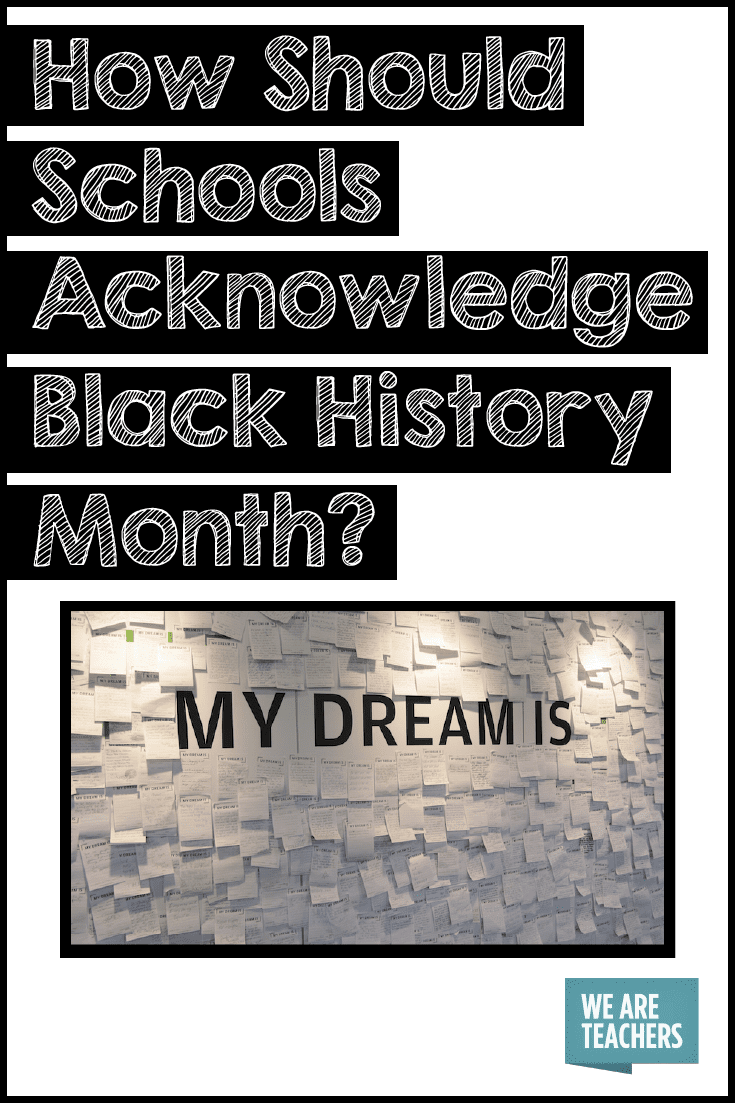During my first year of teaching, I remember quite vividly the feeling of being forgotten. February rolled around and, strangely I might add, no one said one word about the fact that it was Black History Month. No one! Not a parent, not a student, no administrator or fellow teachers … no one. As a black person living in the United States, who is always very aware of the realities surrounding race in this country, I was shocked and even hurt that an entire school would overlook this important time.
Over the years, I’ve found that there are varying degrees of celebration of Black History Month in schools. Y’all, I have seen the good, the bad, the ugly, and the beautiful. So, here are three things schools should avoid and three things they should definitely do during Black History Month.
What schools should avoid during Black History Month
1. Not celebrating at all
More common than you would think, many schools across the country do nothing for Black History Month. In my case, the school that ignored Black History Month had so few students of color, you could count them and the two black teachers on one hand. Honoring and celebrating Black History Month is for everyone, no matter their race.
Many schools do celebrate Black History Month. For 28 days. In February. And that’s it. Black history is US history. Martin Luther King deserves a place in your everyday curriculum, as do the Black Panthers and Ida B. Wells and Alvin Ailey. Ignoring or omitting these stories is, in a way, cheating history.
2. Shrinking our heroes
Look, I know many schools are trying their best in this department. I just want to offer an observation. Cutesy activities about Martin Luther King that don’t teach his true significance are shrinking a legend. I have some more news: He’s not the only black hero. And there are black heroes beyond Rosa Parks, Frederick Douglass, and Harriet Tubman. Students should also learn about Kwame Ture (Stokely Carmichael), Bayard Rustin, Ella Baker, Angela Davis, Medgar Evers, and so many more. All of those heroes are worth covering in your class, just as much as the “Mount Rushmore” of notable black figures that everyone already knows.
Don’t water down, sugarcoat, or tailor the narrative. Many times, we promote the nicely packaged stories of black history without considering the full story. Don’t get me wrong. King’s “I Have a Dream” speech is beautiful, but if that is the only piece of oratory we focus on during Black History Month, we are shortchanging our students. We miss the chance to share equally powerful, radical statements from Malcolm X, Huey P. Newton, and Fannie Lou Hamer, and in doing so, present an incomplete narrative.
3. Dwelling on the suffering
Slavery, Jim Crow, systematic oppression, and racism are all issues that need to be addressed. It is important to engage students critically about these topics. To be sure, the suffering matters greatly. However, one of the things that schools do during Black History Month is place too heavy an emphasis on the sad, horrific details of the black experience. Black History Month should also be a celebration of art, culture, and innovation. There are ways to commemorate the struggle and celebrate the triumph.
What schools should do during Black History Month
1. Acknowledge it
Doing something is better than doing nothing, even if you have to change your curriculum. For all those schools that are already making a real and earnest effort, thank you, that’s fantastic. If your school has nothing planned, now is the time to come up with a new tradition. It’s important to acknowledge Black History Month, even if it’s a small gesture. Plan a talent show or a poetry slam or a simple slide-show video. Step up and do something!
2. Put the focus on giving back
One of the common misconceptions about Black History Month is that we must have a fascinating and robust curriculum or nothing at all. Well, in addition to your program, or even in place of it, you can go out and serve. Help a black-owned business or a community center in a predominately black neighborhood. One of the greatest things I have seen a school do is get out and serve the community it seeks to honor.
3. Get creative
Last year, I witnessed an amazing school assembly during Black History Month. There were songs from Hamilton, dancing, and actors playing Elijah McCoy, Lewis Latimer, and Huey P. Newton! All the while, a student, positioned in front of the audience, painted on a large canvas a vibrant, multicolored portrait of the audience with the word Equality written on top. It was the most creative program I have ever seen. If your school is thinking outside of the box with great creativity, you are doing Black History Month right.
We’d love to know—what’s your take on how we celebrate Black History Month in schools? Come share in our WeAreTeachers Chat group on Facebook.
P.S…Here are some Black History Month posters and activities you might want to check out.


